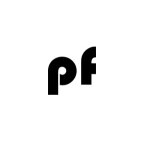
Jelte Keur, Maria Turik, Yena Young, Marco Canevacci

Plastique Fantastique
Plastique Fantastique
“The installations created by Plastique Fantastique are a reinterpretation of urban frames and the manifestation of architecture as a catalyzer of free relations between inhabitants. Constructions evacuate materiality in order to turn into intercommunicable membranes between the interior and the exterior. Architectural structures are devoid of any details or textures in order to create spaces for living, communication and interaction based on the inhabitants’ participation, engagement and experience. They are founded on temporary forms of presence for which the inflated space transforms into a medium designed to augment our immediate perception of the city. The main characteristic of the structures created by Plastique Fantastique is that they act as catalyzers – the constructions does not outline forms, it does not direct our gaze and does not rebuild life conditions based on the separation of living cells. On the contrary, these structures bestir the inhabitants’ direct consonant reactions and contribute to the establishment of a dialogical, pneumatic and transitory environment. The volumes are less formal and rather organic, generating conditions of access into a state of apparent intangibility and entering a direct dialogue with the historical and manifest characters of urban constructions and the city. The cellular impression of space bubble inserted into another space is not meant to produce separations; it is designed to superpose two different space transitions and to emphasize the invisible stratifications that take place in the built environment. At the same time, these structures can often be seen as articulating nodes in public spaces which are powerfully printed by the histogram of an urban planning that lost its contact with the real and effective development of relations between inhabitants. The city is read through the senses and turns into a giant web of relations that nodes such as these can distribute across the open space. Furthermore, the insertion of these structures not only in public spaces, but inside buildings as well, suggests the idea of intercommunicable, freely crossable and intersectable spaces. Through installations and interventions such as these, architecture acquires a landscape condition – it disappears in the landscape of its own spatiality.” Sabin Bors (Catalyzers, Arhitext, 2013)






